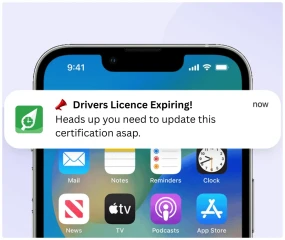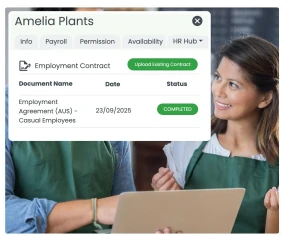Inclusivity is more than just a trendy term; it plays an important role in creating and developing a thriving and progressive workplace. For small and medium-sized enterprises (SMEs), this is important, as each team member's contribution is of great significance and has a direct impact. By embracing diversity and inclusivity, SMEs can foster an environment and code of conduct that is innovative, empathetic and highly productive on a long-term basis.
The Importance of Inclusivity in SMEs

In the workplace, inclusivity is more than just following the law. Small and medium-sized enterprises (SMEs) should strive to build a culture and attention where all employees feel appreciated and respected, regardless of their background, identity, life experiences, etc. By embracing inclusivity, SMEs can bring about positive changes within their organisation, boost employee engagement and effective communication skills and attract talented individuals. This is especially true for SMEs, as their teams' close-knit nature relies on every individual's inclusion to maintain high morale and productivity.
Gender Transition’s Relevance in the Workplace
Understanding and supporting gender transition in the workplace is incredibly important. When employees go through this major life change, it's crucial for them to have an environment that not only accepts them but also actively supports them. This support is especially vital in small and medium-sized enterprises (SMEs), as each employee's well-being directly impacts the company's overall health. Creating a workplace that embraces and supports gender transitions shows a dedication to diversity and inclusion, fostering a sense of belonging and respect for all employees.
The Purpose of This Blog
This blog is here to help small and medium-sized enterprises (SMEs) with effective communication strategies when it comes to an employee's gender transition. We'll go into ways to get the workplace ready, have meaningful and respectful conversations, and foster a supportive environment for everyone. By the time you finish reading this guide, SME leaders and team members will have the know-how and tools to approach this crucial aspect of workplace inclusivity with empathy and understanding.
Definition and Basics of Gender Transition

Gender transition refers to a person's process of aligning their gender expression and body with their gender identity. Gender identity is a deeply-held sense of being male, female, or something else, and may not necessarily align with an individual's assigned sex at birth.
Different Types of Transition:
Transitioning can involve different kinds of changes. These changes can be social, like when someone changes their name or pronouns. They can also be legal, which means updating official documents. And sometimes, transitioning can involve medical aspects, like hormone therapy or surgery. It's important to know that not all transgender people choose or can afford every type of transition.
Time and Being Unique: The transitioning process is different for everyone. It can take a different amount of time and involve different steps for each person. It's really important to respect each person's unique journey.
Impact on Everyone: Transitioning doesn't just affect the individual going through it. It also affects the people around them, especially in the workplace. It's really important to understand and support this process in order to have a respectful and productive work environment.
Why Being Sensitive is Important:
Being inclusive and respectful: It's important to understand and respect the process of transitioning to create a welcoming work environment.
Boosting mental health and productivity: When employees feel supported and accepted, they are more likely to be motivated and productive.
Considering legal and ethical aspects: Mishandling a transition can have legal consequences due to the increasing legal protections for transgender individuals. It is ethically crucial to provide equal support to all employees.
What are the Effective Communication Strategies that should be Implemented and Followed

Communicating effectively plays a vital role in successfully supporting an employee's gender transition in a small or medium-sized enterprise (SME). To ensure a smooth transition, it is crucial to approach this process with empathy, understanding, and a commitment to inclusivity. In this article, we will explore the important aspects of communication strategies that can be utilised.
A. Open Communication with the Transitioning Employee
1. Including Them in the Decision-making: The transitioning employee should be actively involved in the communication process. It is essential to have a conversation with them to understand their needs and preferences. This includes discussing how they would like to be addressed (including pronouns and name changes), their timeline for transition, and how they would like to inform their colleagues about this change. It is important to remember that each person's journey is unique, and their comfort and privacy should be respected.
2. Respecting Their Choices and Boundaries: Respect and sensitivity are key in supporting the transitioning employee. They may have specific preferences regarding who should be informed about their transition and when. It is crucial to follow their lead and respect their choices. Additionally, it is important to ensure that all discussions are kept private and their personal information is not shared without their consent. This demonstrates respect and ensures compliance with privacy laws and workplace policies.
B. Communicating with the Rest of the Team
1. To ensure effective communication within the team, it is crucial to conduct sensitivity training before making any announcements. This training will help create a supportive and understanding environment. It should cover important topics such as gender identity, respecting individual identities and pronouns, and how to avoid unintentionally offensive behaviour.
2. When team members have questions or concerns after the transition is communicated, it is essential to address them respectfully and with factual information. Encourage open dialogue while also setting clear boundaries about what is appropriate and respectful. Remind everyone about the anti-discrimination policies and the significance of maintaining a respectful workplace.
C. Ongoing Support and Communication
1. Keeping in touch with the transitioning employee on a regular basis is crucial: It's not just a one-time thing but an ongoing process. By having regular check-ins, we can provide the necessary support and address any concerns that may come up. It also allows us to adapt our strategies and support systems as needed.
2. Building a Welcoming and Supportive Atmosphere:
We should strive to create an environment where all employees feel safe and valued. This can be achieved through continuous efforts to promote diversity and inclusion, visible support from management, and fostering a culture that embraces diversity. Remember, it's not just about supporting the transitioning employee but about creating a better workplace for everyone.
Steps in Handling Misunderstandings and Conflicts

Steering through an employee's gender transition at work can be quite complicated, and even with the best intentions, there might be some misunderstandings and conflicts that arise. Small and medium-sized businesses (SMEs) must proactively tackle these challenges to create a respectful and inclusive workplace for all their employees.
A. Establishing Clear Policies Against Discrimination
To effectively manage conflicts and misunderstandings, it is essential to have well-defined and strong anti-discrimination policies. These policies should:
1. Clearly Address Gender Identity and Expression: Make it known that any form of discrimination or harassment based on gender identity or expression will not be tolerated.
2. Specify Behaviors and Consequences: Provide clear examples of what behaviours are considered unacceptable and the consequences that follow such actions.
3. Ensure Accessibility: Make sure that these policies are easily accessible to all employees, whether through employee handbooks or the company's internal website.
4. Regular Updates: Laws and societal norms change over time, and it is important to regularly review and update the policies to align with current legal requirements and best practices.
B. Strategies for Resolving Conflicts
When conflicts arise, it is pivotal to address them promptly and effectively. Here are some strategies to consider:
1. Swift and Fair Investigation: Any allegations of discrimination or harassment should be promptly and fairly investigated to ensure fairness for all parties involved.
2. Encourage Open Communication: Create an environment where employees feel comfortable expressing their concerns or reporting incidents without the fear of facing retaliation.
3. Mediation: In cases of interpersonal conflicts, consider involving a neutral third party to mediate and help peacefully resolve the issues.
4. Focus on Restoration: Instead of solely focusing on punitive measures, emphasise the importance of educating the parties involved and restoring a positive work environment.
In this blog, we have explored the many aspects of effective communication within small and medium-sized enterprises (SMEs) during an employee's gender transition. It is clear that communication plays a crucial role in ensuring a smooth and respectful transition process. We have learned that it is not just the words we use but also the openness, inclusivity, and understanding that these words convey.
Having proper communication strategies can greatly impact the experience of the transitioning employee, creating a supportive environment where they feel valued and respected. It is all about fostering a culture of empathy and respect where every employee, regardless of gender identity, feels included and important to the organisation. The practices and policies we have discussed meet legal standards and showcase a company's dedication to diversity and inclusion, which is increasingly recognised as a key driver of business success.



